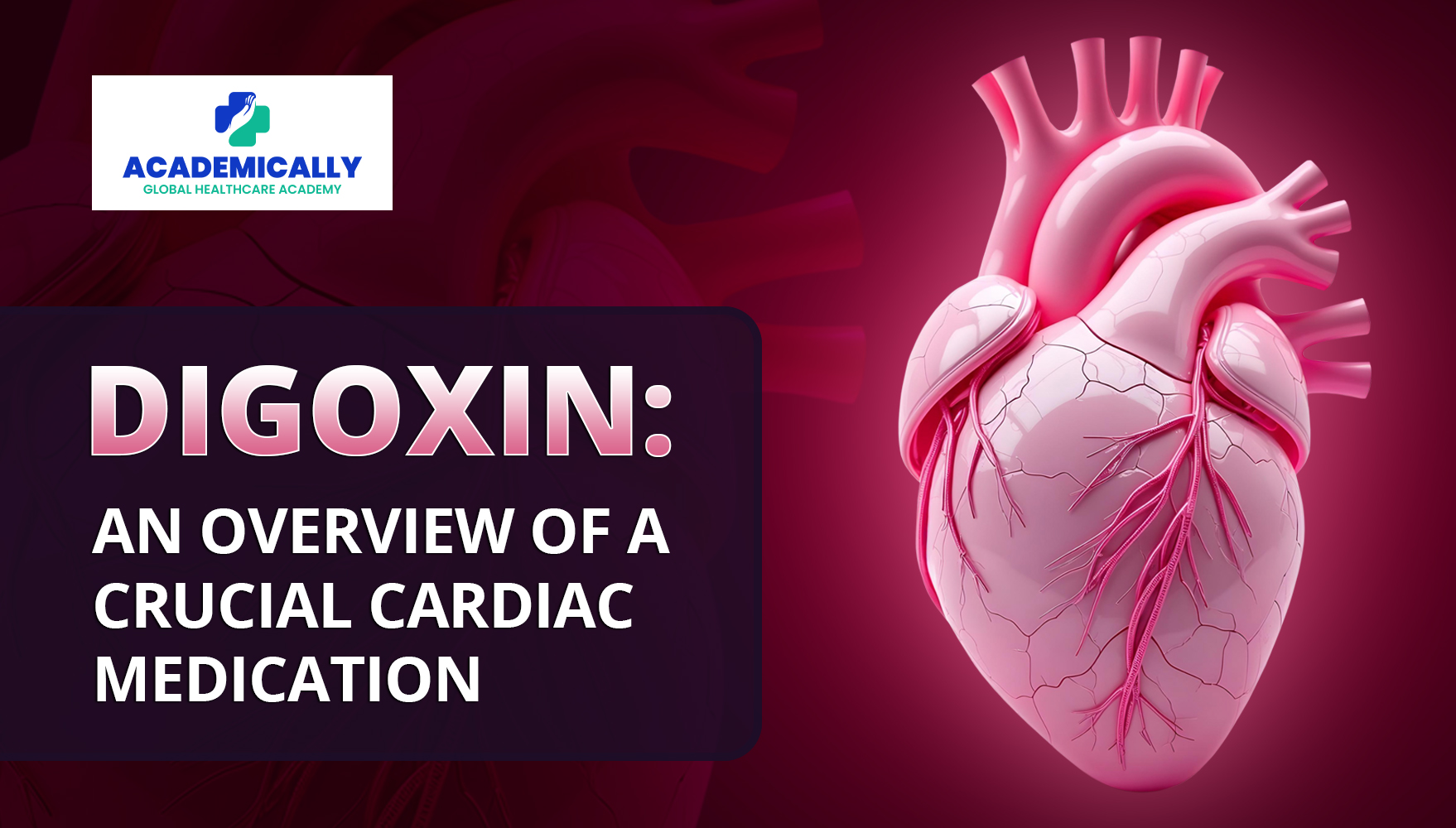Historical Context
The use of digitalis preparations dates back to the 18th century when William Withering, an English botanist and physician, first documented its medicinal properties in treating dropsy (oedema). Since then, Digoxin has evolved from a crude herbal remedy to a precisely formulated pharmaceutical agent, playing a crucial role in cardiovascular medicine.
Mechanism of Action
Digoxin exerts its effects primarily through the following mechanisms:
- Inhibition of the sodium-potassium adenosine triphosphatase (Na+/K+-ATPase) pump in cardiac myocytes.
- Increased intracellular calcium concentration, leading to enhanced myocardial contractility (positive inotropic effect).
- Modulation of the autonomic nervous system, resulting in decreased conduction velocity through the atrioventricular (AV) node and increased vagal tone (negative chronotropic effect).
Clinical Applications
Digoxin is primarily used in the management of:
- Atrial Fibrillation: To control ventricular rate, especially in patients with concomitant heart failure.
- Heart Failure: To improve symptoms and reduce hospitalisations in selected patients with reduced ejection fraction.
It's worth noting that while Digoxin is still useful in certain cases, its importance has lessened with the development of newer medications and treatments.
Dosing and How to Take Digoxin
Getting the dose right with Digoxin is important since there’s a fine line between a helpful dose and too much. The dose is usually revised based on several things, like:
- Kidney health (since the kidneys help remove Digoxin from your body)
- Age and body weight
- Other medicines you’re taking
- Any electrolyte imbalances (like low potassium or magnesium)
Typically, the daily dose is between 0.125 to 0.25 mg, but this might change on the basis of lab results and how you’re responding. Regular blood tests are necessary to make sure the levels are just right—this helps Digoxin work effectively and reduces any risks of side effects.
Side Effects and Toxicity
Common side effects of Digoxin include:
- Gastrointestinal disturbances (nausea, vomiting, anorexia)
- Central nervous system effects (headache, fatigue, confusion)
- Cardiac arrhythmias
- Visual disturbances (chromatopsia)
Digoxin toxicity can occur due to overdose or accumulation in patients with impaired renal function. Signs of toxicity may include severe gastrointestinal symptoms, cardiac arrhythmias, and neurological disturbances. It’s really important to spot and treat Digoxin toxicity early, as it can lead to serious health issues. If not managed well, it can be dangerous.
Drug Interactions to Watch Out For
Digoxin can interact with several other medications, which may either increase its levels in the body or make it stronger than intended. Some common interactions include:
- Amiodarone and verapamil (these can raise digoxin levels)
- Certain antibiotics like erythromycin and clarithromycin
- Potassium-depleting diuretics (these are known to increase the risk of toxicity)
Doctors and healthcare providers need to carefully check all the medications a patient is taking to make sure Digoxin works safely and effectively.
Monitoring and Follow-up
Patients on digoxin therapy require regular monitoring, including:
- Serum digoxin levels
- Renal function tests
- Electrolyte levels (particularly potassium)
- Electrocardiogram (ECG) to assess for signs of toxicity or therapeutic effect
The "digoxin effect" on ECG, manifests as a scooped ST segment and can be observed in some patients but is not indicative of toxicity when present in isolation.
Future Directions
While the use of Digoxin has decreased in some clinical scenarios, ongoing research continues to explore its potential benefits in specific patient populations. Areas of investigation include its possible role in advanced heart failure management and potential anti-cancer properties.
Also Read: Proton Pump Inhibitors (PPIs): Mechanism, Clinical Use, and Long-Term Considerations

Conclusion
Digoxin is an important heart medication used mainly to help with heart rhythm issues, like atrial fibrillation, and to ease symptoms in people with heart failure. It’s necessary to choose the right patients, give the right dose, and keep an eye on them while they’re using Digoxin to make sure it’s safe and effective.
Healthcare providers are important in teaching patients how to use Digoxin correctly. This includes explaining how it works, what side effects of Digoxin to watch out for, and why it’s important to stick to their treatment plan and attend follow-up visits.
When used correctly and monitored regularly, Digoxin can make a big difference in managing heart conditions and improving overall heart health.
To learn about more important medical topics, click here.


